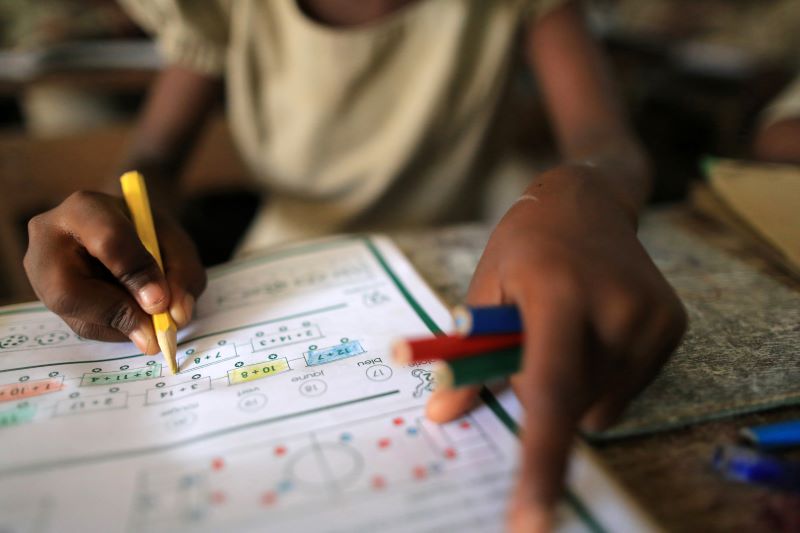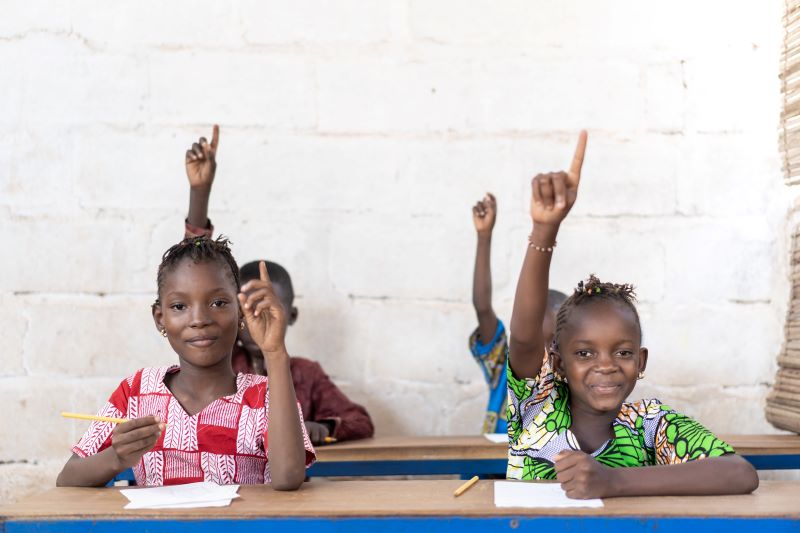Recommended
As gender gaps in school enrollment and attainment continue to narrow around the world, global priorities have shifted toward focusing on the quality of education and the implications that a high-quality education has for broader societal outcomes including fostering gender equity. There is ample evidence illustrating the benefits of investing in girls’ education including that it supports improved social, economic, and health outcomes. While girls’ education offers many benefits, it is not yet a guarantee of more equal societies. If by and large girls are now receiving the same education as boys, why is there a persistent divergence in learning and later life outcomes?
A key component in the theory of change related to the relationship between girls’ education and equity is the empowerment of women and girls. Broadly defined, empowerment refers to one’s ability to have both control and power over the decisions and resources within their life. However, measures of ‘empowerment’ and the process through which it is achieved are understood in a variety of ways and are sometimes not defined at all thus making it challenging to achieve.
As a background piece to the CGD’s flagship report, “Girls’ Education and Women’s Equality: How to Get More out of the World’s Most Promising Investment,” this note provides an overview of the literature on the relationship between education and girls’ empowerment and aspirations. We outline the evolution of the concept of empowerment as it relates to girls’ education, discuss the necessary pre-conditions that schools and education systems must meet for empowerment through education to be possible, and summarize the evidence related to strengthening empowerment and aspirations. We conclude by identifying five key action areas moving forward:
- Make school environments safe
- Identify the mechanisms driving impact of successful empowerment programs
- Include men and boys in efforts to strengthen empowerment for women and girls
- Remove gender bias from classrooms
- Make empowerment a central—not an additional—goal of schooling
Read the full note here.
El enfoque mundial se ha desplazado hacia la calidad de la educación y las implicaciones que una educación de alta calidad tiene para lograr la equidad de género, a medida que las brechas de género en la inscripción y el logro escolar continúan disminuyendo en todo el mundo. Existe amplia evidencia que muestra los beneficios de invertir en la educación de las niñas, incluyendo que respalda mejores resultados sociales, económicos y de salud. Aunque la educación de las niñas ofrece muchos beneficios, aún no garantiza sociedades más igualitarias. Si en general las niñas ahora reciben la misma educación que los niños, ¿por qué persiste una divergencia en los resultados de aprendizaje y en los resultados de la vida posteriormente?
Un componente clave en la teoría del cambio relacionada con la relación entre la educación de las niñas y la equidad es el empoderamiento de las mujeres y las niñas. Definido de manera amplia, el empoderamiento se refiere a la capacidad de controlar y tener poder sobre las decisiones y recursos en la vida de uno. Sin embargo, las medidas de "empoderamiento" y el proceso mediante el cual se logra se entienden de diversas maneras y a veces no se definen en absoluto, lo que dificulta su logro.
Como pieza de fondo para el informe estrella de CGD, "Educación de las niñas e igualdad de género: cómo obtener más de la inversión más prometedora del mundo", esta nota proporciona una visión general de la literatura sobre la relación entre la educación y el empoderamiento y las aspiraciones de las niñas. Se describe la evolución del concepto de empoderamiento en relación con la educación de las niñas, se discuten las condiciones previas necesarias que las escuelas y los sistemas educativos deben cumplir para que el empoderamiento a través de la educación sea posible, y se resume la evidencia relacionada con el fortalecimiento del empoderamiento y las aspiraciones. Se concluye identificando cinco áreas clave de acción para avanzar:
- Hacer que los entornos escolares sean seguros
- Identificar los mecanismos que impulsan el impacto de los programas de empoderamiento exitosos
- Incluir a hombres y niños en los esfuerzos para fortalecer el empoderamiento de mujeres y niñas
- Eliminar el sesgo de género en las aulas
- Hacer del empoderamiento un objetivo central, no adicional, de la educación.
Lea la nota completa aquí
Rights & Permissions
You may use and disseminate CGD’s publications under these conditions.








